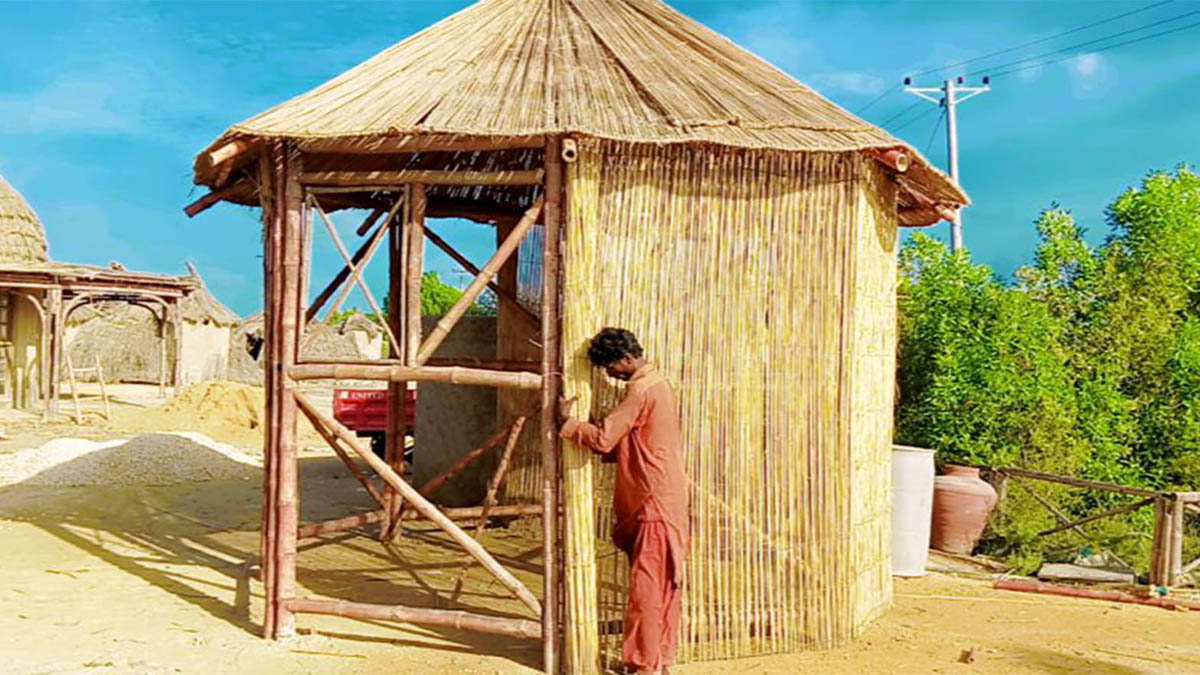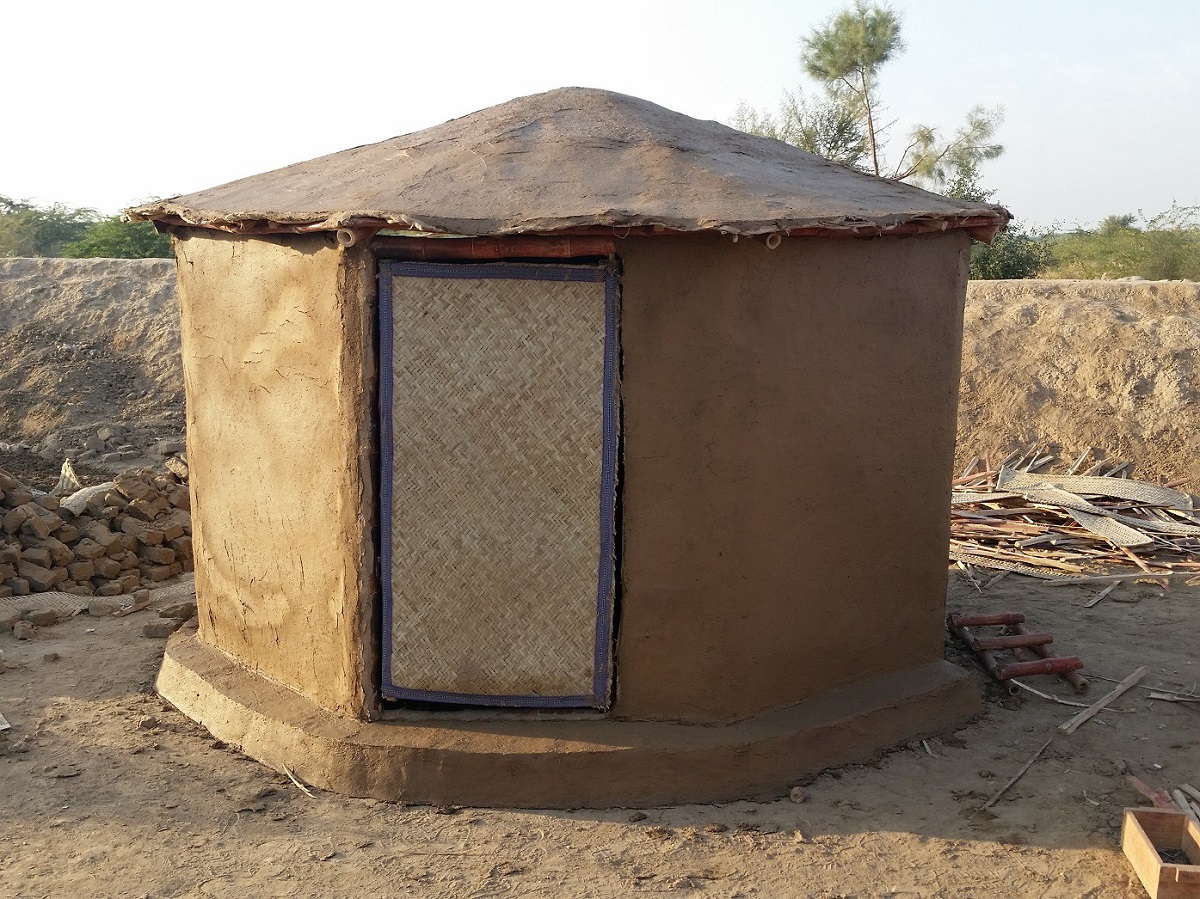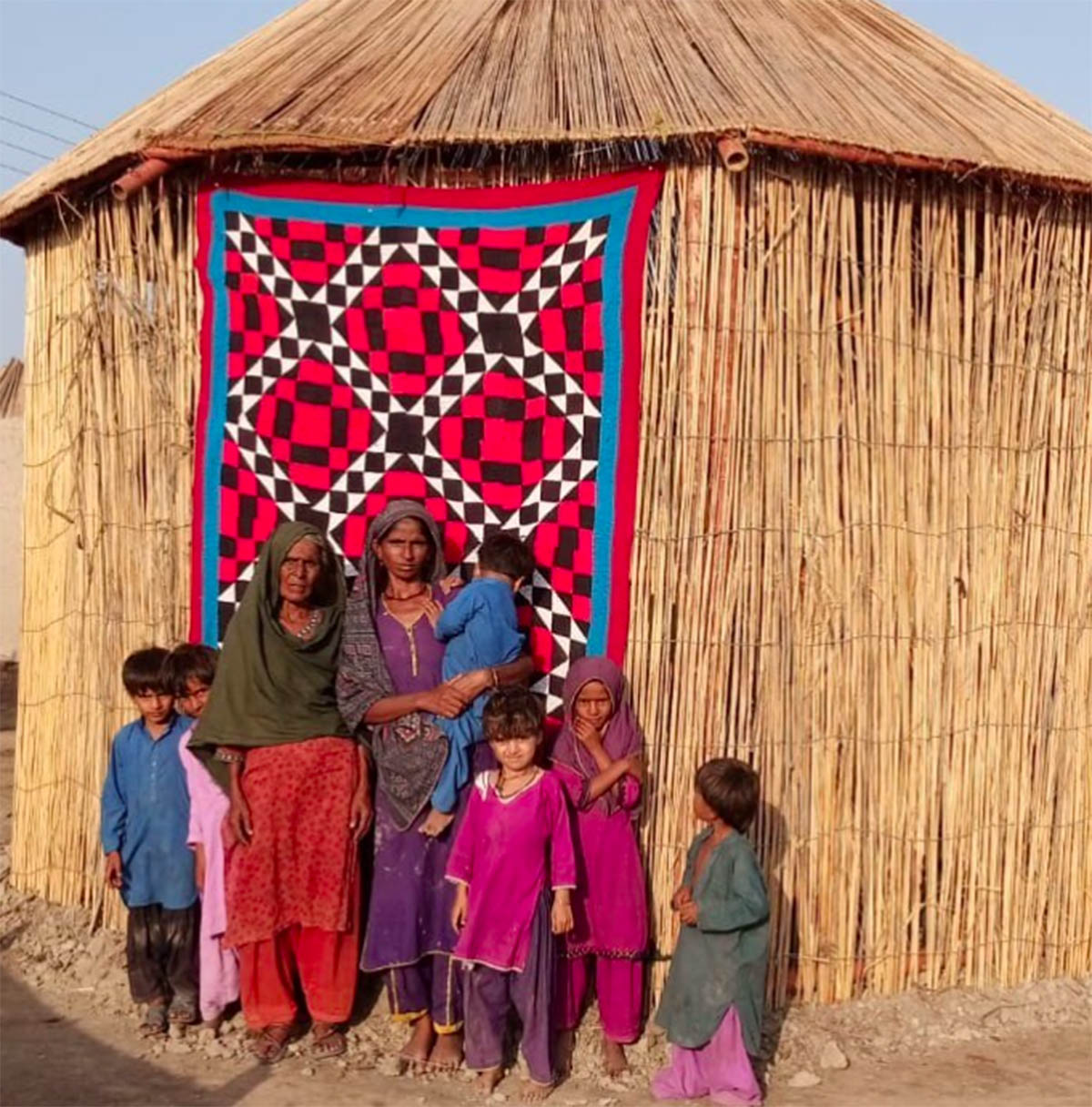Submitted by Sidra Khokhar
Lari OctaGreen: INTBAU Pakistan’s Prefabricated Bamboo Shelters
Pakistan Architecture News - Feb 28, 2023 - 20:35 6201 views

Pakistan endured one of the worst climatic disasters in its history in 2022. With the entire country submerged in water due to the constant torrential rainfall paired with the ongoing post-disaster rehabilitation phase and its challenges to housing the destitute, the flash flooding has hit the entire country at large with millions of lives lost, homes destroyed and livelihoods of the affected population in the rural areas perished.
During this trivial time, one such initiative taken up by local architects of Pakistan is the collaborative initiative between the Heritage Foundation and the INTBAU (International Network for Traditional Building, Architecture & Urbanism. Pakistan. Est. 2017). This national shelter program has been launched with the intention of working towards the provision of housing for the flood-affected families of Sindh and Baluchistan. This program is spearheaded by notable Pakistani architects such as Yasmeen Lari and Murad Jamil with patronage from HRH, The Prince of Wales, with the intention to create better habitable spaces in a disaster-stricken area through a merger between the disciplines of traditional architecture, building, and urban landscape of the rural areas. The board of trustees committee for this humanitarian project includes Ar. Khadija Jamal, Ar. Shanaz Ramzi, Hadi Ali Rizvi, Ar. Asad I.A. Khan, Ar. Tariq Alexander Qaiser, and Ar. Saadia Fazli who are all working towards ensuring the distribution, assembly, and execution of this operation.
Flood victims standing outside the Lari Octagreen, INTBAU Pakistan. Image via INTBAU/Instagram
As a staunch advocate of preserving the vernacular identity of Pakistan, this flood relief shelter program works towards solving the issue of displacement of the flood victims by providing them with prefabricated bamboo structures that have been fabricated by hand by local Pakistani artisans. This prefabricated module which is more specifically known as the ‘Lari OctaGreen’, has been a design module that the Heritage Foundation has been working on continuously since its conception in 2015 after Pakistan was hit by the earthquake. These sustainable shelters are designed to be environmentally friendly and easy to construct, making it convenient for displaced families to participate in their assembly on-site.
Till now, 1000 of these prefabricated structures have been delivered and erected in the flood areas through the generosity of the donors, architects, and participants of this project. With two production lines in operation, one in Pono Village (Mirpur Khas) and another established one in Makli, Sindh, these funded structures have been disseminated to the respective areas demarcated in the map as below with a concentration in areas such as Lasbela, Shikarpur, and Mirpur Khas.

INTBAU's Bamboo Shelter Deployment Map, INTBAU Pakistan. Image © INTBAU Pakistan
The Lari OctaGreen seeks to serve as an innovative solution to the flood-affected areas of Sindh and Baluchistan by advocating for community resilience through its accessibility and comprehensive nature for assembly by the residents of the flood-affected area. Having a zero-carbon footprint, without the use of modern-day materials such as steel or concrete, the architectural language followed by these shelters not only fits the cultural context of the rural displaced populace of the affected region but also is inspired by local design methodologies to reinforce the concept and give the displaced people a sense of place.
The Frame Structure for the Lari OctaGreen, INTBAU Pakistan. Image © Heritage Foundation
The Lari OctaGreen is a low-cost, 12 feet in diameter structure that has the capacity to house five-six people which can also be expanded by clustering multiple units together for larger family units. The interior layout of this modular housing unit has enough space to house two charpoys (string beds) with circulation space. Other adjoining spaces include a kitchen area and a toilet.

Lari OctaGreen with mud insulation, UNDP Pakistan. Image via INTBAU World Congress 2022
Using local materials such as bamboo panels lined with date palm matting and inspiration from vernacular architectural elements such as the traditional Chaura (conical roof) of the Southern region, and the bamboo frame inspired by the Dhijji structure used in the North of Pakistan. The octagonal form of the bamboo structure is designed to be DRR-compliant (Disaster Risk Reduction) with a lightweightness that does not pose any threat to the surrounding environment regarding collapsing. The roof joists of this shelter are foldable thereby making it convenient to deliver and are covered in matting lined with tarpaulin to enhance further structural stability.
The overall structure as shown in the drawing below demonstrates a simplified linear structure that can be easily understood by the layman to construct on-site. The layout plan is flexible to fit the needs of the residents of the space. The families assembling this unit for themselves are also encouraged to apply insulation using local materials such as lime plaster or mud on the outer walls and roof of the structure, ultimately also providing the structure with stability reducing the risk of overturning as well.
Lari OctaGreen structural details, The Heritage Foundation & UNDP Pakistan. Image © UNDP Pakistan | Medium
Lari Octagreen insulation and roofing technique, UNDP Pakistan. Image © UNDP Pakistan | Medium
Due to the intentional simplification of the construction methods, this shelter is conveniently fabricated even by the unskilled local workers that are guided by the INTBAU team who are handling the distribution and assembly of the Lari OctaGreens on site. An example that advocates for participatory design of the affected communities, especially the women who engage in stitching the roof of the shelter, the structure also provides a potential source of livelihood to the locals as a means of assembling structures for the larger community of the affected area. The entire structure is low-cost and time efficient, taking a total of an hour to assemble on-site. This ensures a speedy and effective method for distribution even in remote stricken areas by trained artisans.
Women at work during the Lari OctaGreen assembly phase. Image © INTBAU Pakistan/Instagram
Women at work during the Lari OctaGreen assembly phase. Image © INTBAU Pakistan
With 1000 units already assembled and distributed to the disaster-stricken areas of Sindh and Balochistan, the Lari OctaGreens drive is still operational and now focusing on the collection of funds for providing sanitation and other miscellaneous amenities alongside the established shelters in the Sindh and Baluchistan region.

A view from a shelter from the Village Makli, on 21st September 2022. Image via INTBAU Pakistan/Instagram

A view from a shelter from the Village Makli, on 21st September 2022. Image via INTBAU Pakistan/Instagram
References:
- UNDP Pakistan (2015). Green shelters inspired by local techniques offer refuge to families affected by the October 2015 earthquake.(2015 December 9). Retrieved March 10, 2023 from (Green shelters inspired by local techniques offer refuge to families affected by the October 2015 earthquake | by UNDP Pakistan | Medium).
- INTBAU World Congress (2022). Yasmeen Lari's OctaGreen Shelters. (24-25 March, 2022). Retrieved March 10, 2023 from (Yasmeen Lari’s ‘Lari OctaGreen’ Shelters | INTBAU World Congress 2022).
- INTBAU Pakistan. Retrieved March 10, 2023 from (INTBAU Pakistan).
Top image in the article courtesy of Heritage Foundation of Pakistan.
bamboo climate community flood relief work flood resilience modular Pakistan participatory design prefabricated shelter sustainable architecture vernacular
